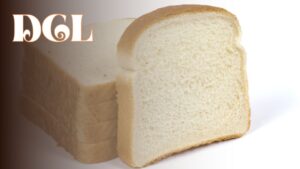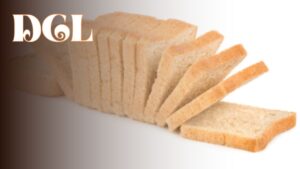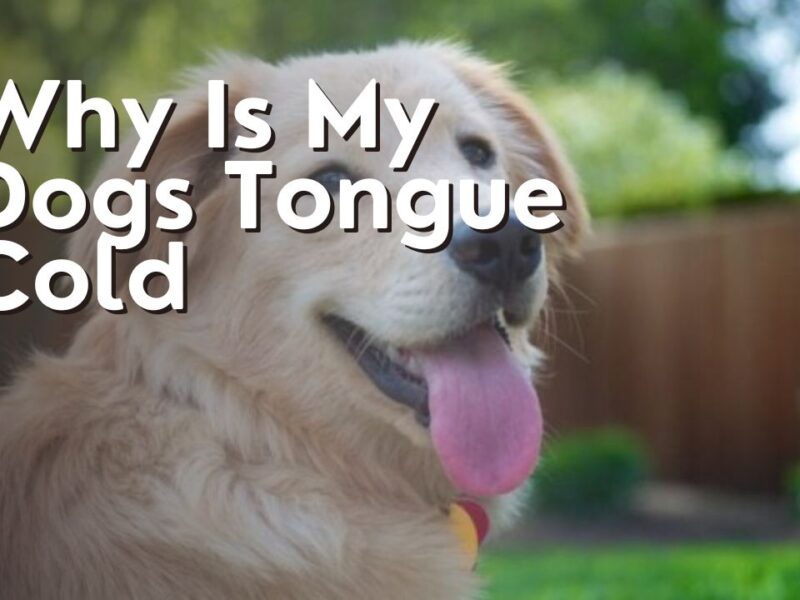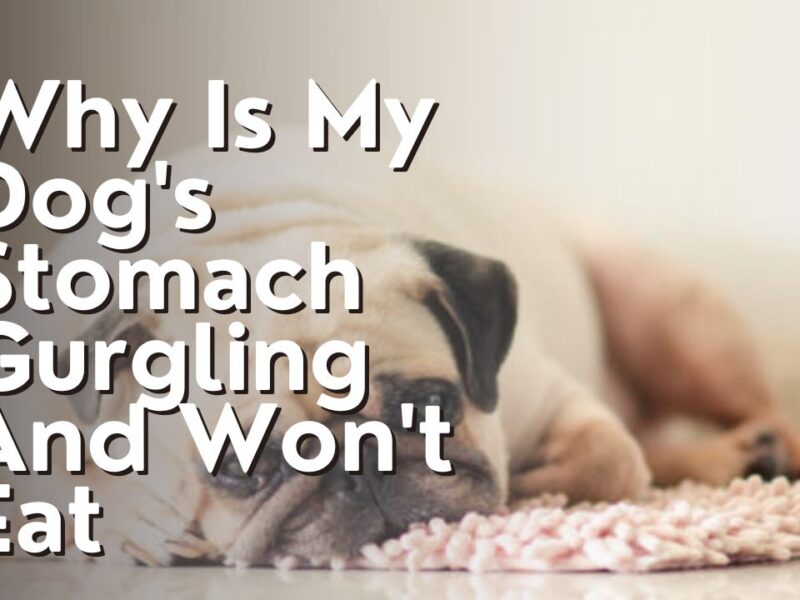Is white bread bad for dogs?
As a dog owner, it’s important to understand the impact of different foods on our furry friends’ health. In this article, we will dive into the nutritional needs of dogs, the ingredients found in white bread, and the potential health risks associated with it.
From there, we will explore moderation and portion control, as well as healthier alternatives to white bread. So, let’s explore the question of whether white bread should be a part of our dogs’ diet or not.
- Understanding a Dog's Nutritional Needs
- The Ingredients in White Bread
- Potential Health Risks of White Bread for Dogs
- Moderation and Portion Control
- Healthier Alternatives to White Bread
- Consulting with a Veterinarian
- Signs of Bread Intolerance in Dogs
- Importance of a Balanced Diet for Dogs
- Other Human Foods to Avoid Giving Dogs
- Conclusion and Final Thoughts
- Frequently Asked Questions
- Conclusion
Understanding a Dog’s Nutritional Needs
You need to understand your dog’s nutritional needs to ensure they are getting the proper diet. Just like humans, dogs require a balanced diet that provides them with all the essential nutrients. Feeding them the right food is crucial for their overall health and well-being.
When it comes to dogs, their primary source of energy should come from high-quality protein. This includes meat, fish, and poultry. Protein helps build and repair tissues, supports the immune system, and promotes healthy skin and coat. It is important to choose a dog food that lists a quality source of protein as the first ingredient.
In addition to protein, dogs also need carbohydrates, fats, vitamins, and minerals. Carbohydrates provide energy and can be found in grains, vegetables, and fruits. Fats are a concentrated source of energy and help with nutrient absorption. Vitamins and minerals play a vital role in various bodily functions and should be included in their diet.
While dogs can eat bread, it is not necessarily the best choice for them. White bread, in particular, lacks nutritional value and is high in carbohydrates. It can cause weight gain and digestive issues in dogs. Instead, opt for dog-friendly alternatives that provide the necessary nutrients without any potential harm.
Understanding your dog’s nutritional needs is essential for their overall health. By providing them with a balanced diet that includes high-quality protein, carbohydrates, fats, vitamins, and minerals, you can ensure they are getting all the necessary nutrients they need to thrive.

The Ingredients in White Bread
White bread is a common food that many people enjoy, but it may not be the best choice for our furry friends.
One key point to consider is its high carbohydrate content, which can lead to weight gain and other health issues in dogs.
Additionally, white bread lacks essential nutrients that dogs need to thrive, such as protein, vitamins, and minerals.
High Carbohydrate Content
The high carbohydrate content in white bread can be detrimental to dogs. Dogs are primarily carnivores, and their digestive systems are not designed to efficiently process large amounts of carbohydrates. When dogs consume high-carb foods like white bread, it can lead to weight gain, obesity, and even diabetes. Additionally, the high carbohydrate content can cause spikes in blood sugar levels, which can be harmful to dogs, especially those with preexisting health conditions.
As a dog owner, it’s important to be aware of the impact that excessive carbohydrates can have on your furry friend’s health. It’s crucial to prioritize a balanced diet for your dog, focusing on high-quality protein sources and limited carbohydrates. Opting for healthier alternatives to white bread can help ensure your dog’s overall well-being.
Lack of Essential Nutrients
When feeding your furry friend, it’s crucial to consider that white bread lacks essential nutrients for their overall health and well-being. While dogs can technically eat white bread, it should not be a regular part of their diet.
White bread is highly processed and stripped of important nutrients like fiber, vitamins, and minerals. These nutrients are vital for a dog’s digestion, immune system, and overall energy levels. Feeding your dog a diet that is high in white bread can lead to deficiencies and health issues in the long run.
Instead, it’s best to opt for healthier alternatives like whole grain bread or even better, a balanced diet that consists of high-quality dog food specifically formulated to meet their nutritional needs.
Your furry friend deserves the best, so make sure to provide them with a diet that supports their overall well-being.
Potential Health Risks of White Bread for Dogs
In my opinion, there are several potential health risks of feeding white bread to dogs.
Firstly, white bread is high in carbohydrates and calories, which can contribute to weight gain and obesity in dogs.
Secondly, the lack of fiber in white bread can lead to digestive issues such as constipation or diarrhea.
Lastly, some dogs may have allergic reactions to ingredients found in white bread, such as wheat or gluten.
Weight Gain and Obesity
Avoid feeding your dog white bread as it can contribute to weight gain and obesity. Just like in humans, consuming too much bread, especially the processed white kind, can lead to excess pounds in dogs.
White bread is high in carbohydrates and lacks the necessary nutrients and fiber that dogs need. When dogs consume excessive amounts of bread, their bodies convert the carbohydrates into sugar, causing a spike in their blood sugar levels. This can result in weight gain, as the excess sugar gets stored as fat.
Additionally, the lack of fiber in white bread can lead to constipation and digestive issues in dogs.
To maintain a healthy weight and overall well-being, it’s best to stick to a balanced diet specifically formulated for dogs.
Digestive Issues
Feeding your dog excessive amounts of processed carbohydrates can contribute to digestive issues. White bread, in particular, is known to cause problems for some dogs. The high levels of gluten and sugar found in white bread can lead to inflammation in the digestive system and can cause symptoms such as bloating, gas, and diarrhea.
Additionally, the lack of fiber in white bread can disrupt proper digestion and can lead to constipation. If your dog is experiencing digestive issues, it is best to avoid feeding them white bread and opt for healthier alternatives instead. Whole wheat bread or grain-free options are better choices as they are easier for dogs to digest and provide more nutritional value.
Remember to always consult with your veterinarian before making any changes to your dog’s diet.
Allergic Reactions
If your pup has a sensitive stomach, it’s important to be aware of potential allergic reactions to certain foods. While white bread may seem harmless, it can actually trigger allergic reactions in some dogs.
Here are three reasons why white bread can be bad for dogs:
- Wheat sensitivity: White bread is made from wheat flour, which can cause allergic reactions in dogs with wheat sensitivity. These reactions may include digestive issues, skin problems, and even respiratory symptoms.
- Sugar content: White bread often contains added sugar, which can be harmful to dogs. Consuming excessive sugar can lead to weight gain, dental problems, and an increased risk of developing diabetes.
- Lack of nutritional value: White bread lacks essential nutrients that dogs need to thrive. Feeding them this empty-calorie food can lead to nutritional deficiencies and overall poor health.
To keep your furry friend healthy, it’s best to avoid feeding them white bread altogether.
Moderation and Portion Control
Remember to moderate the amount of white bread you give to your dog. While white bread in moderation is generally safe for dogs, it should not be a significant part of their diet. Dogs have different nutritional needs than humans, and too much white bread can lead to weight gain and other health issues. As a responsible dog owner, it’s important to control the portions and ensure that white bread is only given as an occasional treat.
When offering white bread to your dog, it’s best to tear it into small pieces and give them just a small amount. This not only prevents overfeeding but also makes it easier for your furry friend to digest. Remember, dogs don’t need bread to meet their nutritional requirements, so it’s essential to focus on a balanced diet consisting of high-quality dog food.
If you notice any negative reactions or digestive problems after giving your dog white bread, it’s crucial to consult with your veterinarian. They can provide guidance specific to your dog’s individual needs and advise on the best course of action.
In conclusion, moderation and portion control are key when it comes to feeding white bread to your dog. By being mindful of the quantity and frequency, you can ensure that your dog enjoys the occasional treat without compromising their health.
Healthier Alternatives to White Bread
When it comes to finding healthier alternatives to white bread for dogs, two options that come to mind are whole wheat or grain bread and homemade dog treats.
Whole wheat or grain bread can provide more nutrients and fiber compared to white bread.
On the other hand, homemade dog treats can be a fun and nutritious way to treat your furry friend while avoiding the preservatives and additives often found in store-bought treats.
Whole Wheat or Grain Bread
You should consider feeding your dog whole wheat or grain bread instead of white bread. Whole wheat or grain bread is a healthier option for dogs because it contains more nutrients and fiber compared to white bread. It provides essential vitamins and minerals that are beneficial for your dog’s overall health. Additionally, the fiber in whole wheat or grain bread aids in digestion and helps regulate bowel movements. To help you make a more informed decision, here is a quick comparison between white bread and whole wheat or grain bread:
| White Bread | Whole Wheat or Grain Bread | |
|---|---|---|
| Nutrients | Low | High |
| Fiber | Low | High |
| Vitamins and Minerals | Few | Abundant |
| Digestive Health | Poor | Good |
By choosing whole wheat or grain bread, you are providing your dog with a healthier and more nutritious option for their diet.
Homemade Dog Treats
Homemade dog treats are a great alternative to store-bought options. Making your own treats allows you to control the ingredients and ensure that your furry friend is getting a healthy and tasty snack. Plus, it’s a fun activity that you can do together!
There are endless recipes available online, so you can find one that suits your dog’s taste preferences and dietary needs. You can use ingredients like peanut butter, pumpkin, sweet potato, and even bacon to create delicious treats that your dog will love. Just be sure to avoid using any harmful ingredients like chocolate, onions, or garlic, as these can be toxic to dogs.
With homemade dog treats, you can give your pup a special treat that you know is good for them.
Consulting with a Veterinarian
If consulting with a veterinarian, they can provide guidance on whether white bread is bad for dogs. It’s important to seek professional advice before making any dietary changes for your furry friend. Veterinarians have the expertise and knowledge to assess the potential risks and benefits of feeding white bread to dogs.
When discussing the topic with a veterinarian, they may explain that white bread is not a recommended food choice for dogs. While it may not be toxic, it lacks nutritional value and can lead to health issues in the long run. Dogs have different dietary needs than humans, and their digestive systems are not designed to efficiently process certain ingredients found in bread, such as gluten.
To further illustrate the importance of considering a dog’s specific needs, take a look at the table below:
| Dog’s Nutritional Needs | White Bread |
|---|---|
| Protein | Low |
| Fiber | Low |
| Vitamins and Minerals | Low |
As we can see, white bread falls short in meeting a dog’s nutritional requirements. Therefore, it’s best to consult with a veterinarian to find healthier alternatives that can fulfill your dog’s dietary needs and keep them happy and healthy.

Signs of Bread Intolerance in Dogs
One way to determine if your dog is intolerant to bread is by observing any signs of digestive discomfort or allergic reactions. These signs can vary from mild to severe and may include:
- Upset stomach: Your dog may experience vomiting, diarrhea, or constipation after consuming bread.
- Gas and bloating: If your dog is intolerant to bread, they may experience excessive gas and a bloated abdomen.
- Itching and skin irritation: Allergic reactions to bread can manifest as itching, redness, rashes, or hives on the skin.
- Ear infections: Some dogs may develop ear infections as a result of bread intolerance, leading to discomfort and head shaking.
- Lethargy and decreased appetite: If your dog is having difficulty digesting bread, they may become lethargic and lose interest in food.
- Behavioral changes: Bread intolerance can also cause irritability, restlessness, or changes in behavior.
If you notice any of these signs after your dog consumes bread, it is important to consult with your veterinarian. They can help determine if your dog has an intolerance or allergy to bread and provide guidance on the best diet for your furry friend’s health.
Importance of a Balanced Diet for Dogs
To ensure your dog’s overall health and well-being, it’s crucial to provide them with a well-balanced diet. Just like humans, dogs require a variety of nutrients to thrive and stay healthy. A balanced diet for dogs consists of a proper combination of protein, carbohydrates, fats, vitamins, and minerals. Each of these components plays a vital role in supporting their overall health and promoting optimal bodily functions.
Protein is essential for building and repairing tissues, while carbohydrates provide energy. Fats are necessary for a healthy coat and skin, as well as for the absorption of fat-soluble vitamins. Vitamins and minerals are crucial for various bodily functions, such as maintaining a strong immune system and promoting healthy bone growth.
Feeding your dog a balanced diet helps prevent nutrient deficiencies and ensures that they receive all the necessary nutrients in the right amounts. It also helps maintain a healthy weight, which is important for preventing obesity and its associated health problems.
Keep in mind that a balanced diet should be tailored to your dog’s specific needs, taking into consideration their age, size, breed, and any underlying health conditions. It’s always best to consult with a veterinarian to determine the most appropriate diet for your furry friend.
By providing a well-balanced diet, you can help ensure your dog’s overall health and well-being for years to come.
Other Human Foods to Avoid Giving Dogs
Another food that should be avoided giving dogs is chocolate. While chocolate might be a tasty treat for us humans, it contains theobromine, a substance that is toxic to dogs. Even a small amount of chocolate can cause vomiting, diarrhea, increased heart rate, and even seizures in dogs. It’s important to remember that the darker the chocolate, the more dangerous it is for our furry friends. So, it’s best to keep all types of chocolate out of their reach.
Another food that should be avoided giving dogs is grapes and raisins. These seemingly harmless fruits can actually cause kidney failure in dogs. Even small amounts of grapes or raisins can be toxic and lead to serious health issues. Symptoms of grape or raisin toxicity include vomiting, diarrhea, and lethargy. If you suspect your dog has ingested grapes or raisins, it’s important to seek veterinary care immediately.
Additionally, onions and garlic should be avoided when it comes to feeding dogs. Both onions and garlic contain compounds that can damage a dog’s red blood cells, leading to anemia. Symptoms of onion or garlic toxicity include weakness, pale gums, and increased heart rate. It’s best to avoid any foods that contain even small amounts of onions or garlic, such as onion powder or garlic salt.
In conclusion, there are several human foods that should be avoided when it comes to feeding dogs. Chocolate, grapes, raisins, onions, and garlic can all be toxic and potentially harmful to our furry friends. It’s important to be aware of these foods and keep them out of our dog’s reach to ensure their health and well-being.
Conclusion and Final Thoughts
As I wrap up this discussion on other human foods to avoid giving dogs, it’s important to reiterate the potential dangers of feeding dogs certain foods. While it’s tempting to share our meals with our furry friends, it’s crucial to prioritize their health and well-being. We’ve covered a range of foods, including chocolate, grapes, onions, and now white bread.
White bread may seem harmless, but it can actually be harmful to dogs. It lacks essential nutrients and can lead to weight gain and other health issues, such as diabetes. Additionally, the high carbohydrate content in white bread can cause spikes in a dog’s blood sugar levels, which is especially concerning for dogs with diabetes or those prone to obesity.
To help you remember the foods to avoid feeding your dog, I’ve created a helpful table below:
| Food | Potential Dangers |
|---|---|
| Chocolate | Toxic to dogs |
| Grapes | Kidney failure |
| Onions | Anemia |
| White bread | Nutrient deficiency, weight gain, blood sugar spikes |
By being mindful of what we feed our dogs, we can ensure they lead long, healthy lives. Remember, it’s always best to consult with a veterinarian before introducing any new foods into your dog’s diet.
Frequently Asked Questions
Can dogs eat whole wheat bread instead of white bread?
Dogs can eat whole wheat bread instead of white bread. It’s a healthier option because it contains more fiber and nutrients. However, moderation is key as dogs should not have too much bread in their diet.
Is it safe to give my dog bread crusts?
It is generally safe to give your dog bread crusts as an occasional treat. However, make sure they are plain and free of any harmful ingredients like garlic or onion, which can be toxic to dogs.
Can I give my dog a small piece of white bread as a treat?
Sure, you can give your dog a small piece of white bread as a treat. Just make sure it’s in moderation and doesn’t contain any harmful ingredients like raisins or xylitol.
Are there any nutritional benefits to feeding my dog white bread?
Feeding white bread to dogs doesn’t provide any significant nutritional benefits. While it may not be harmful in small amounts, it’s best to opt for healthier options that offer more nutrients for your furry friend.
How often can I give my dog white bread without it being harmful to their health?
I can give my dog white bread occasionally, but it’s important not to make it a regular part of their diet. Too much can lead to obesity and digestive issues.
Conclusion
In conclusion, after researching and understanding a dog’s nutritional needs, it is clear that white bread is not a healthy option for our furry friends. While it may be tempting to share a piece of bread with our dogs, it is important to prioritize their well-being.
White bread lacks essential nutrients and can lead to potential health risks such as obesity and digestive issues. Instead, we should opt for healthier alternatives and ensure that our dogs have a balanced diet that meets their specific requirements.
Let’s keep our dogs happy and healthy by avoiding white bread and other harmful human foods.


